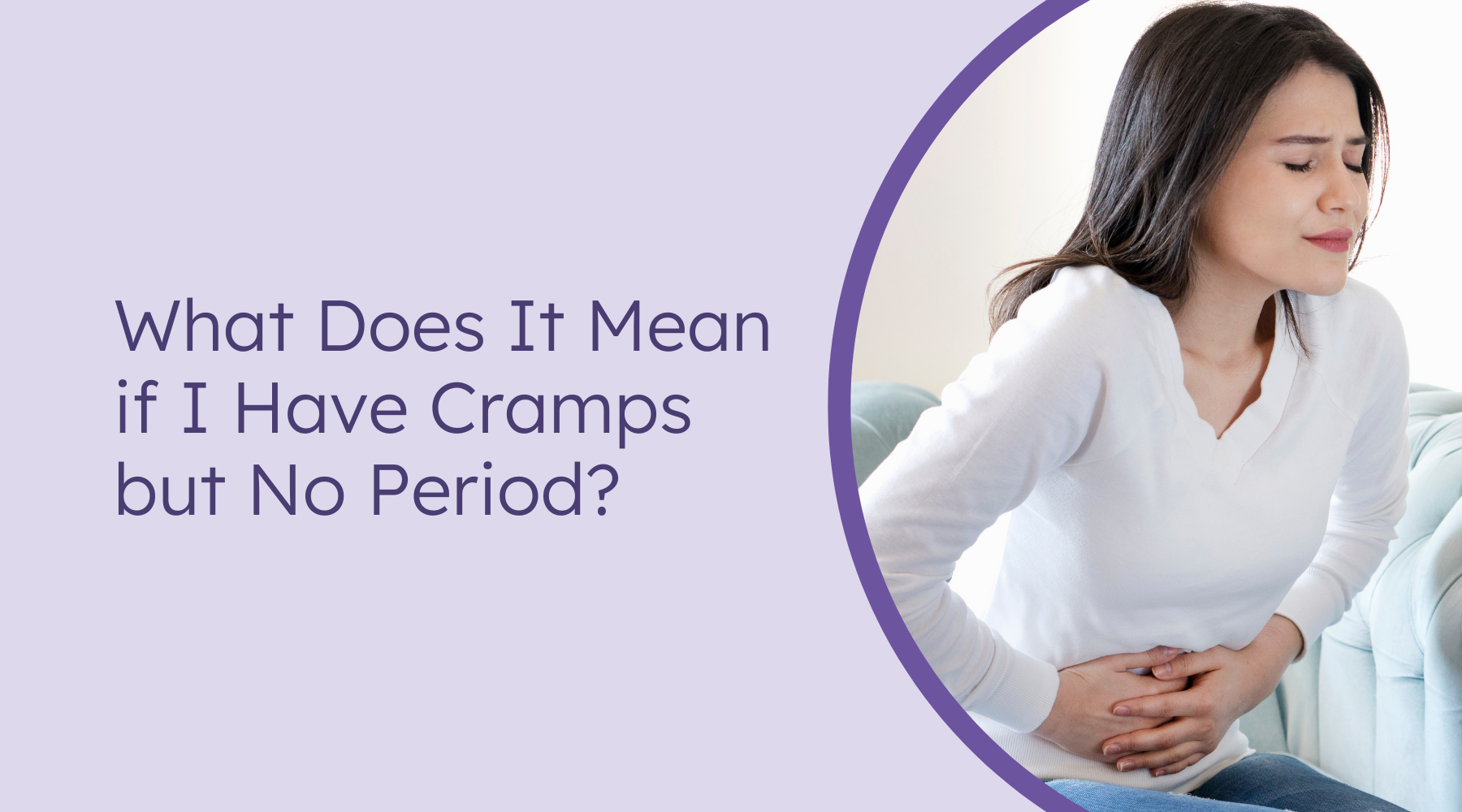Let’s talk about cramps.
Many women assume that pelvic pain or cramping is just part of having a menstrual cycle. While it’s common, cramping without a period isn’t something you should ignore. You might even find yourself wondering, “Why do I have cramps but no period?” or “Why am I getting cramps but no period?”
Cramps without bleeding can happen for a variety of reasons. Some are harmless, while others might need medical attention. Either way, it’s important to understand what’s going on with your body.
5 Possible Causes of Cramps but No Period
Pelvic cramping or pain is often caused by one of the following:
- Early pregnancy
- Ectopic pregnancy
- Pelvic inflammatory disease (PID)
- Ovarian cysts
- Endometriosis
While some of these are no big deal (like early pregnancy or ovulation), others might require you to check in with a healthcare provider. If you’re wondering, “Why do I have lower cramps but no period?” let’s dive into each possible cause to help clear things up.

-
Early pregnancy
Your uterus is an amazing muscular organ. In early pregnancy (first 12 weeks), as it stretches and gets used to being a home for a new little life, you may experience some cramping. If you think you might be pregnant and are asking, “Why do I have period cramps but no period?” it might be time to take a test.
Other signs of early pregnancy include:
- Nausea with or without vomiting
- Swollen, tender breasts
- Increased need to pee
- Fatigue
Early pregnancy is one of the less concerning causes of cramps without bleeding. However, if you know you are pregnant and have cramps and heavy bleeding, please consult your doctor. Low back or abdominal pain with bleeding during early pregnancy may also be a sign of miscarriage. Seek medical attention if you think this is the case.

-
Ectopic Pregnancy
Implantation normally occurs in the uterus but in 1-2% of pregnancies it occurs somewhere other than in the lining of the uterus. The most common site for an ectopic pregnancy is the Fallopian tubes but these ectopic pregnancies can also occur in the ovary, the abdomen, the cervix, or just outside the uterus. Wherever they occur, ectopics are life-threatening and need immediate, emergency medical care.
Abdominal cramping, often severe, is just one symptom of a possible ectopic pregnancy. Other important signs are:
- Shoulder tip pain that gets worse when the woman lies down
- Light-headness or dizziness
If you suspect an ectopic pregnancy, seek emergency medical care.
Risk factors for ectopic pregnancy include: pelvic inflammatory disease, endometriosis, cigarette smoking, infertility treatments, exposure to diethylstilbestrol while in your mother’s womb, pelvic surgery, and previous ectopic pregnancy.
-
Pelvic Inflammatory Disease (PID)
Pain in your lower abdominal could be a symptom of pelvic inflammatory disease. This disease is usually caused by a sexually transmitted infection such as chlamydia or gonorrhea. Other symptoms of a PID include: an unusual discharge or odor from your vagina, pain or bleeding during sex, a burning sensation when urinating, and fever.
Risk factors for pelvic inflammatory disease include: having more than one sex partner, having sex with someone who has sex with other people, being under 25 years old and sexually active, and use of an IUD for birth control.
If caught early, PID can be treated and further damage to your reproductive organs can be prevented. Unfortunately, there’s no way to reverse damage to your Fallopian tubes, cervix, uterus, ovaries or vagina caused by PID. The best treatment is prevention!
-
Ovarian cyst(s)
Pelvic pain that comes and goes with or without bleeding may be due to ovarian cysts. Interestingly, cysts (fluid-filled sacs) are common inside the ovaries and can come and go without being a problem. An ovarian cyst that gets too big can cause a dull ache or a sharp pain below your belly button usually off to one side.
Follicle cysts and corpus luteum cysts are two most common types of ovarian cysts. They are usually harmless. Follicle cysts form when the follicle doesn’t ovulate. This causes the follicle to continue growing into a cyst. These cysts often have no symptoms and eventually go away.
Corpus luteum cysts occur when the follicle breaks open and releases the egg. The empty follicle sac then shrinks into a new mini organ called the corpus luteum. The corpus luteum makes hormones like progesterone that are important should pregnancy occur. Most corpus luteum cysts go away after a few weeks, but some keep growing and may bleed or twist the ovary and cause pain.
Common causes of ovarian cysts include:
- Hormonal imbalances
- Endometriosis
- Pregnancy
- Severe pelvic infections
It’s important to seek medical attention for any pain related to your reproductive organs. Regular gynecologic exams help with early detection and management of conditions that may affect your fertility. Read up about ovarian cysts here.
-
Endometriosis
Pelvic pain is a main symptom of endometriosis, a condition in which uterine-like tissue grows outside the uterus. Many women with endo get cramps during menstruation as well as pain with intercourse, bowel movements or urination.
How bad your pain is does not necessarily tell you anything about how bad the endometriosis may be. Some women with severe endometriosis have very little or even no pain, while others with severe pain may have minimal extra-uterine tissue growth.
Other symptoms of endometriosis include: trouble conceiving, excessive bleeding, fatigue, diarrhea, constipation, bloating or nausea, especially during menstruation.
Read more about endometriosis here.
Curious if you might be pregnant? Try our early pregnancy tests!














